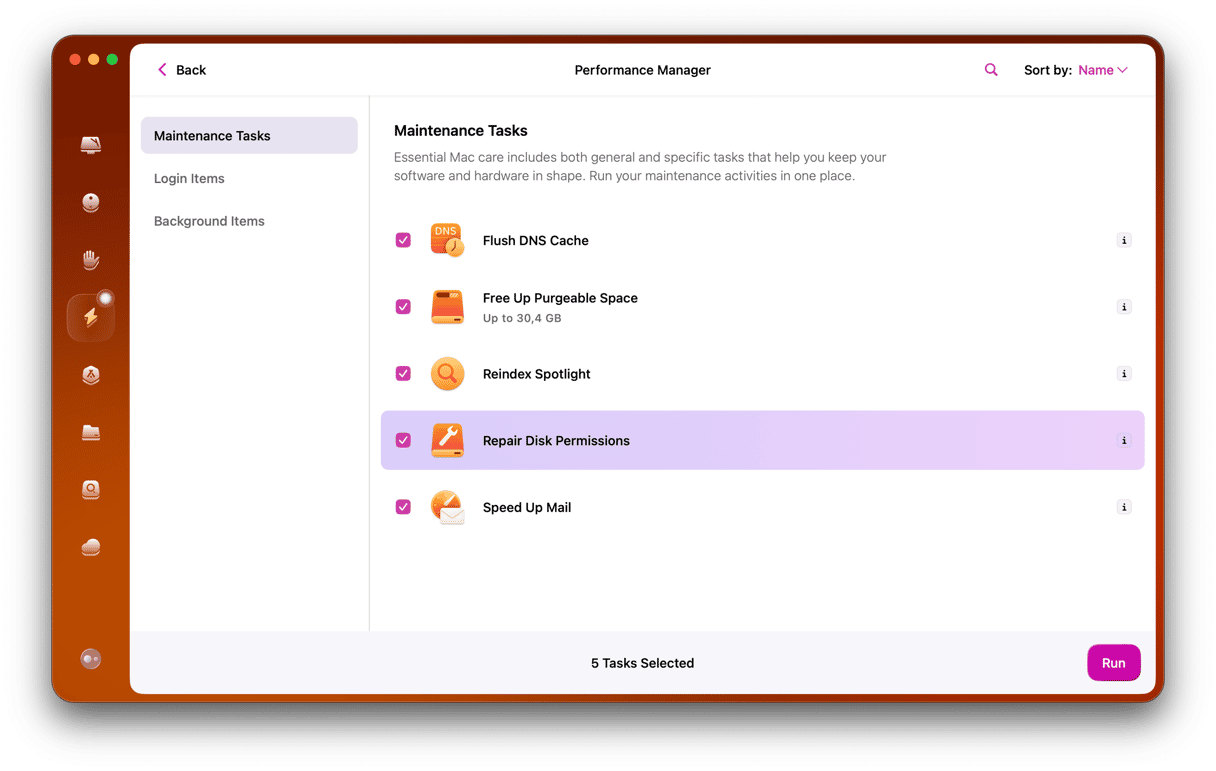There are few things more alarming when using your Mac than it failing to boot. That sinking feeling is made worse if you have just updated to a new version of the OS, like the latest macOS Sequoia. Did something go wrong with the upgrade? Did it fail to install properly? Is your Mac incompatible? These are just a few of the questions that are likely to enter your head as you frantically search for the reason your Mac won’t start after Sequoia update. The good news is that the reason is likely to be simple, perhaps so simple that you overlooked it, and the solution is straightforward. In this article, we’ll show you what to do if macOS Sequoia won’t boot.
Why is my Mac not booting after a Sequoia upgrade?
There are lots of possible reasons why your Mac might not boot or gets stuck in macOS Sequoia boot loop. It could be something as simple as a power connection coming loose or battery running out of charge. Or it could be more complicated, like a problem with your startup disk.
How to fix it when macOS Sequoia won’t boot
The first thing to do is to rule out the most obvious causes.
- Check the power cable is securely connected if your Mac runs on mains power. Make sure the plug is fully in the socket on the wall and power is switched on. If you have a MacBook, connect its power adapter, in case its battery has discharged.
- Is the problem definitely with your Mac? Sometimes, what looks like a failure to boot can be a problem with an external display especially if your Mac doesn’t normally chime on startup. If you use an external display with your Mac, check that it’s working properly and connected to your Mac.
- Disconnect external peripherals and try again, just in case one of them is causing a problem.
If none of those steps works, we need to go further and try other solutions.
1. Reset NVRAM
NVRAM, or non-volatile RAM, is the bit of your Mac’s memory that retains data even when your Mac is shut down. On a Mac with Apple silicon, it resets every time you reboot. But on an Intel-based Mac, manually resetting it can sometimes fix problems. To reset it on an Intel-based Mac, press Command-Option-P-R and hold them down while you press the power button. Release the keys when you hear a second startup chime.

2. Try booting into safe mode
Booting into macOS Sequoia safe mode runs checks on your startup disk and fixes any problems it finds, if they can be fixed. It then boots your Mac, loading only the extensions necessary to start up. If the cause of your Mac not booting is a rogue extension, it will boot into safe mode. The process for booting into safe mode is different for Apple silicon Macs and those with an Intel processor.
Here’s how to start Mac in safe mode on macOS Sequoia.
Intel-based Mac
- Press the power button, then immediately press and hold the Shift key.
- Log in.
- If you’re asked to log in again, do it.
- You should see ‘Safe Boot’ in the menu bar.

Mac with Apple silicon
- Press and hold the power button until ‘Loading Startup Options’ appears on the screen.
- Choose your startup volume.
- Press and hold the Shift key and select ‘Continue in Safe Mode’.
- Your Mac will restart, and when the login window appears, you should see ‘Safe Boot’ in the menu bar.
- Log in.

If your Mac starts up in safe mode, try rebooting normally. If it boots, the problem is fixed. If not, restart in safe mode, go to System Settings > General > Login Items & Extensions, turn off all login items and background extensions, and reboot. If that works, turn them on again one by one, rebooting each time until you find the culprit.
3. Repair your startup disk in recovery mode
If restarting in safe mode doesn’t work, the next step is to reboot into recovery mode and, if necessary, reinstall macOS. Again, the process is different for Apple silicon and Intel-based Macs.
Intel-based Mac
Hold down Command and R when you press the power button.
Mac with Apple silicon
Hold down the power button until you see the Startup Options screen. Click Options, then Continue.

When you see macOS Utilities, choose Disk Utility, select your boot disk, then choose First Aid. When it’s finished, try rebooting normally.
4. Reinstall macOS
If nothing so far has worked, but you’re able to boot into recovery mode, you should try reinstalling macOS. Follow the steps for repairing your startup disk above, but when you see macOS Utilities, choose Reinstall macOS instead of Disk Utility.
If you can’t boot even into recovery mode, it could indicate a problem with your Mac’s battery or power supply or another hardware cause. The only option then is to contact Apple Support online or book an appointment at a Genius Bar, or take your Mac to your nearest Authorized Service Center.
If your Mac won’t boot after you upgrade to Sequoia, it can be alarming, especially if there is no sign of activity at all. However, there is often a solution that’s not too difficult to implement. There are a number of possible causes for a failure to boot, both software and hardware. Follow the steps above to identify what’s causing the problem for your Mac and then fix it.







